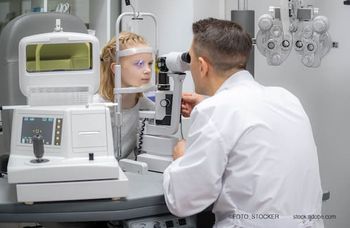
- Ophthalmology Times: October 2024
- Volume 49
- Issue 10
The impact of cross-linking on corneal transplant rates
Key Takeaways
- Corneal cross-linking has led to a significant decline in corneal transplant rates for keratoconus globally.
- Cross-linking stabilizes the cornea, reducing the need for keratoplasty, especially in younger patients or those with milder disease.
A Norwegian study demonstrates that transplant rates continue to drop over time
Before the availability of cross-linking,
Anecdotally, I have been performing far fewer corneal transplants since iLink corneal cross-linking (Glaukos Corporation) was approved in the US in 2016. I prefer to stabilize the cornea and stop disease progression with cross-linking, and then optimize vision with scleral contact lenses if good vision can’t be obtained with traditional contact lenses or glasses. I almost never perform a keratoplasty procedure for keratoconus anymore unless the patient has already experienced treatment failure with scleral lenses.
Recently, researchers in Norway found that transplant rates continue to decline well beyond the first few years after the introduction of cross-linking. The Oslo University Hospital, which provides corneal transplantation services for approximately half of Norway’s population, reported a 50% decrease in keratoplasties
8 years after cross-linking was approved there, and an 80% reduction after 15 years.3
Researchers at the hospital compared transplant rates during a 2-year period (2005 and 2006) just before the 2007 introduction of cross-linking in Norway, as well as a more recent 2-year period (2021 and 2022). During the 15 years in between the 2 time periods studied, the number of transplants performed for keratoconus declined from 55 to 11 procedures, or 40% of all transplants to just 3% in the later time period. Authors acknowledged that previous studies of the decline in transplant rates after 7 to 8 years were too short of a time frame to ensure cross-linking treatment was offered to all patients with progressive keratoconus.
I agree with that perspective. I would expect we’ll continue to see sharp declines in the US over the next several years. Although surgeons have adopted cross-linking relatively quickly, it still takes time for doctors to gain access to and familiarity with the procedure. I believe that as doctors become more experienced at cross-linking, they gain a better understanding of who is a candidate for the procedure.
We initially thought that factors such as age, severity, and corneal thickness might be contraindications to treatment. It turns out that in most cases, they are not—and our willingness to perform cross-linking in both early- and late-stage disease has increased over time.
In the Oslo study, there was an increase in the mean age of patients undergoing corneal transplant for keratoconus, with only 9% of the transplants (1 of 11) being performed on patients younger than 30 years in 2021-2022 vs nearly 47% of those undergoing keratoplasties (26 of 55) during the earlier time period.3 The vast majority (90.9%) of those undergoing a transplant in the 2021-2022 period were already in the advanced stages of keratoconus.
I believe it is encouraging to see that surgeons are avoiding transplants in young patients and those with milder disease. The ability to avoid or delay transplantation is life-changing, and I think we sometimes underestimate what a big deal a transplant is for a young person. Yes, it can successfully restore their vision, but a transplant also introduces the risk of infection, graft failure, traumatic dislocation of the graft, a greater risk of glaucoma or early cataracts, and a high likelihood of repeat transplants during the patient’s lifetime.
While it is unlikely that corneal transplants for keratoconus will ever drop to 0, I do foresee that transplants will become less common even for advanced keratoconus over time. Take, for example, a case where an older patient with keratoconus who is stable and has stopped progressing but has poor vision in glasses. In almost all cases, we can now correct that patient’s vision effectively with scleral lenses, and that will continue to improve as access to optometrists who fit advanced lenses expands.
Additionally, iLink corneal cross-linking can reduce the time patients spend in advanced stages of keratoconus by up to 28 years, according to a discrete-event microsimulation model.4 Ideally, patients will undergo cross-linking to stop progression of keratoconus earlier in the disease course and never reach the advanced stages in the first place.
Kenneth A. Beckman, MD, FACS
P: 614-890-5692
Beckman is director of corneal services at Comprehensive EyeCare of Central Ohio and clinical assistant professor of ophthalmology at The Ohio State University in Columbus.
References
Mathews P, Benbow A, Corcoran K, et al. 2022 Eye Banking Statistical Report—executive summary. Eye Bank Corneal Transpl. 2023;2(3):e0008. doi:10.1097/ebct.0000000000000008
Godefrooij DA, Gans R, Imhof SM, Wisse RP. Nationwide reduction in the number of corneal transplantations for keratoconus following the implementation of cross-linking. Acta Ophthalmol. 2016;94(7):675-678. doi:10.1111/aos.13095
Hagem AM, Thorsrud A, Sæthre M, Sandvik G, Kristianslund O, Drolsum L. Dramatic reduction in corneal transplants for keratoconus 15 years after introduction of corneal crosslinking. Cornea. 2024;43(4):437-442. doi:10.1097/ICO.0000000000003401
Lindstrom RL, Berdahl JP, Donnenfeld ED, et al. Corneal cross-linking versus conventional management for keratoconus: a lifetime economic model. J Med Econ. 2021;24(1):410-420. doi:10.1080/13696998.2020.1851556
Articles in this issue
about 1 year ago
Shifting the GA paradigmabout 1 year ago
Factors affecting ROP development in the 8 weeks following birthabout 1 year ago
Real-world evidence on latest retinal disease therapiesabout 1 year ago
Inherited retinal diseases meet their therapeutic matchabout 1 year ago
Raising cataract surgery procedure to an art and an experienceabout 1 year ago
Managing mental health in glaucomaabout 1 year ago
Unlocking health mysteriesNewsletter
Don’t miss out—get Ophthalmology Times updates on the latest clinical advancements and expert interviews, straight to your inbox.



















































.png)


